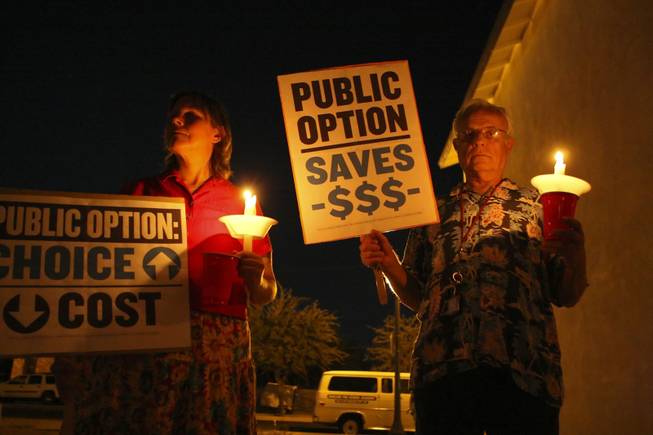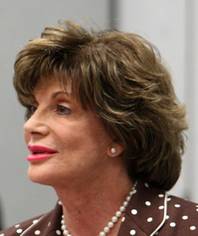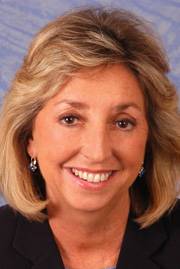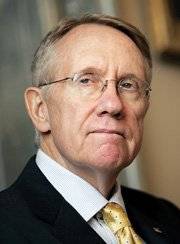
Mona Shield Payne / Special to the Sun
Mary Venable, who is uninsurable because of a pre-existing condition, joins Rudi Kraft in holding signs and candles in support of health care reform during a candlelight vigil Sept. 2 in Boulder City.
Sunday, Oct. 18, 2009 | 2 a.m.
Sun Archives
- Tax on 'Cadillac' insurance plans could snare hotel maids (10-11-2009)
- Is Harry Reid moderate on health care, or keeping powder dry for final fight? (10-4-2009)
- What cuts in Medicare would mean for seniors (10-4-2009)
- John Ensign: Public option would be popular, so let's not do it (9-20-2009)
- Protesters decry GOP stance on health care reform (9-29-2009)
- Harry Reid: Public option trigger 'pretty doggone good idea' (9-25-2009)
Sun Blogs

Shelley Berkley

Dina Titus

Harry Reid
As congressional leaders work behind closed doors to craft the final health care bills for House and Senate votes, one of the key undecided questions remains the fate of the public option.
The conversation appears to have shifted from whether there will be a government-run health insurance option to what exactly a public option might look like. The House bills include a public plan component, though differences remain, while the Senate bills being melded in Majority Leader Harry Reid’s ornate offices are split on the issue.
This crucial element in the health care discussion is now morphing into its own debate as various versions of the public option are offered as possibilities.
“Decisions about a public option remain central to achieving an agreement on getting affordable health care,” said Judy Feder, a senior fellow at the centrist Center for American Progress. “Finding a way to treat it that everybody can live with is essential to making a final deal.”
First, a primer. A public option is not a government-run doctor’s office or clinic or hospital, and it’s not for poor people. As Reid once put it — “it’s not a program set up for people who are losers.”
The public option would essentially be an insurance plan run by the government, which would pay doctors, hospitals and other providers to furnish care — much the way the government now pays providers under Medicare.
With the new requirement that everyone carry health insurance — the way drivers in most states are required to have auto insurance — the government-run plan would be an option for workers who don’t get insurance through their employers. Employees could choose this plan as an alternative to buying insurance from a private company.
Supporters like the public option as a way to force insurance companies to compete for more 30 million new customers — those uninsured Americans, including nearly 500,000 in Nevada, who would be required to obtain health insurance.
Insurance premiums have skyrocketed over the past decade, rising 131 percent, according to a September report from the Kaiser Family Foundation.
And insurance companies are recording large profits.
Feder calls the public option an insurance plan “that’s accountable to us as voters and taxpayers, not to Wall Street.”
Detractors call it socialism or Obamacare.
Those wary of the government plan, including many conservative-leaning Democrats, worry that its lower premiums would force insurance companies out of business.
“A new government run plan would dismantle employer coverage, bankrupt hospitals and increase the federal deficit,” said Robert Zirkelbach, spokesman for America’s Health Insurance Plans, the lobby representing 1,300 of the nation’s health insurance companies.
The nonpartisan Congressional Budget Office has estimated a fraction of the uninsured, about 5 million, would choose the government public option plan.
But as with so much of the health care issue, there are details to be worked out.
Reid gave a hint of the immensity of the coming debate several weeks back when he said: “A public option is a relative term.”
In the House bills, the hang-up is over whether doctors and hospitals would be paid at flat rates as under Medicare or whether the government would negotiate rates with each provider.
Two of the House bills call for reimbursement at Medicare rates plus 5 percent. But an amendment won by conservative House Democrats to a third bill allows doctors and hospitals to negotiate rates with the government.
A flat rate is expected to save the government more money than a negotiated one, supporters argue, by setting a lower price and forcing the private insurers to compete with that price. It would also make it easier for the government plan to get off the ground, because negotiating the rates would require an administrative undertaking, according to Elise Gould, director of health policy research at the liberal-leaning Economic Policy Institute.
Nevada’s Democrats in the House are split on this issue, with both saying they are siding with what Nevada’s doctors want.
Rep. Shelley Berkley said even though her husband, a kidney doctor, would prefer the Medicare-plus-five rate she approved as a member of the Ways and Means Committee, other doctors in Nevada tell her differently.
“In speaking with my doctors at home, most doctors prefer the negotiated rate,” she said. That is now her preference. “That’s what I’m going on.”
But Rep. Dina Titus believes doctors in her Southern Nevada district would prefer the Medicare-plus-five rate and is leaning in that direction.
“Congresswoman Titus has heard from a number of doctors in Southern Nevada who are in favor of reimbursement rates of Medicare plus 5 percent and she is continuing to look into the benefits of going in that direction,” her spokesman, Andrew Stoddard said.
Nevada’s Republican members of Congress, like most Republicans on the Hill, are against the health care proposals.
In the Senate, where the health committee bill includes a public option but the Finance Committee bill does not, the questions are more existential as Reid and top senators and White House officials are negotiating the bill that will be brought to the floor.
Bringing forward a bill with a public option would make it easier to retain — it would likely require 60 votes to remove it, which would be potentially hard to find. Or Reid could draft a bill that does not include the public option, but would allow one to be voted on as an amendment during the floor debate — a potentially steep climb.
Reid warmed recently to the suggestion from Republican Sen. Olympia Snowe of Maine for a trigger — if 5 percent of the residents of the state could not find affordable health plans from private insurers, then a government-run public option would be offered.
Reid called it a “pretty doggone good idea” during a September tele-town hall with Nevada voters.
Titus, who is increasingly supporting the public option, is cool to the trigger proposal. “But if a public option with a trigger is what can get passed, she does not want the perfect to be the enemy of the good,” her spokesman said.
Berkley was less enthused by the trigger, saying insurance companies have had plenty of opportunities to lower their prices.
“We’re either doing this or we’re not,” she said. “What more evidence do we need?”
More recently, Democratic Sen. Thomas Carper of Delaware has suggested having states decide whether or not to create state-run government options. Supporters say that would leave the decision in the hands of locals but critics worry it would be too daunting a task for states. Nevada’s state government, for example, offers only a bare-bones government Medicaid program.
Democratic Sen. Charles Schumer of New York has suggested creating a nationally run public option, but allowing states to decide whether they want to opt in or out.
The debate over the public option took up the bulk of a closed-door meeting of Democratic senators last week as they discuss what Reid should — and should not — include in the bill coming to the floor.
Sen. Ben Nelson of Nebraska, perhaps the most conservative Democrat in the Senate, emerged from the meeting to report that the debate, though “less raucous than a town-hall meeting,” was robust.

Join the Discussion:
Check this out for a full explanation of our conversion to the LiveFyre commenting system and instructions on how to sign up for an account.
Full comments policy